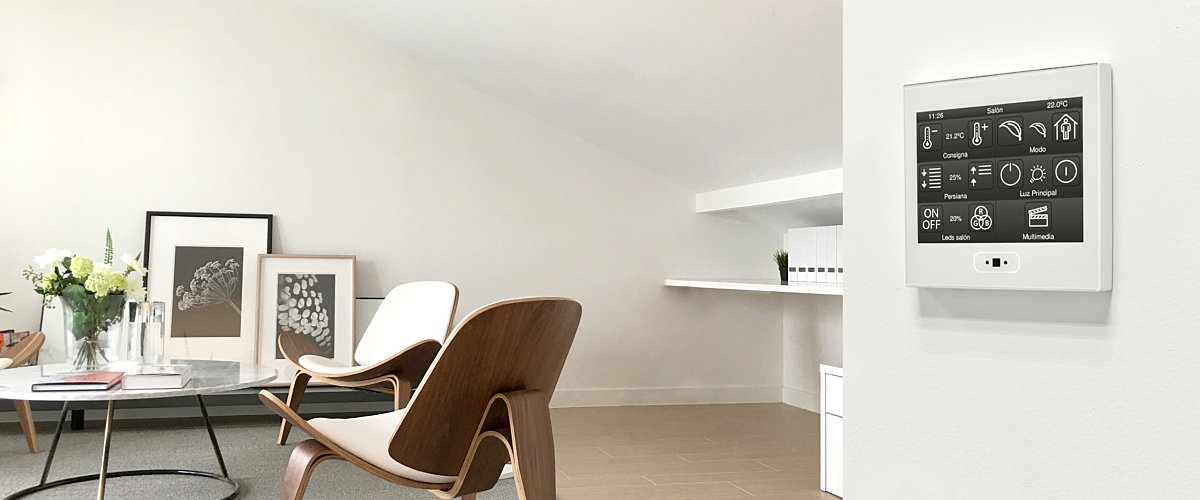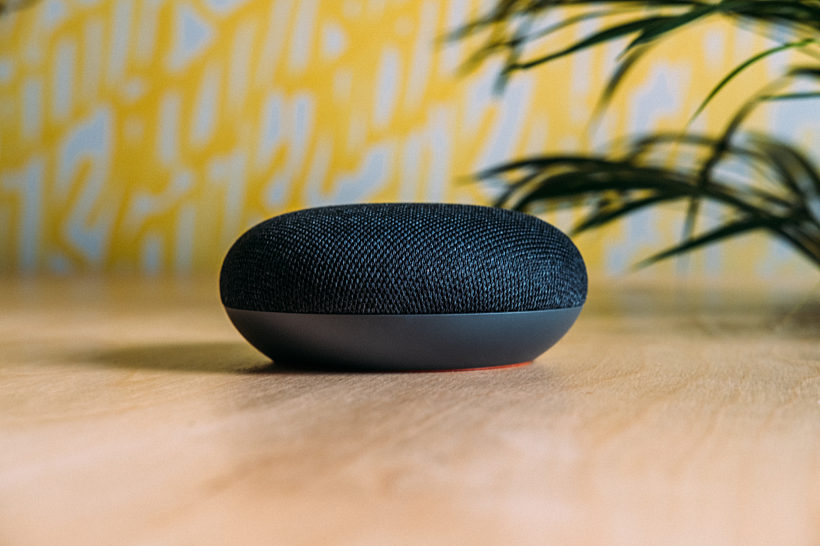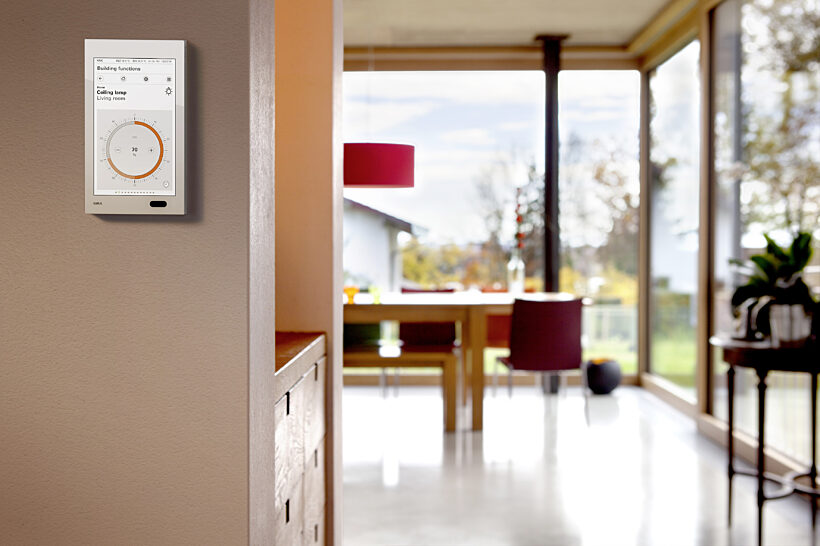
KNX vs off-the-shelf products
It seems that every major brand has jumped on the smart home tech bandwagon these days. So why are dedicated companies like KNX, for instance, still around?
By browsing through our archive, you’ll notice that we’ve spent quite a lot of time reviewing the so called plug-and-play smart home appliances. Ranging from smart speakers all the way to smart kitty litter boxes. Even Ikea has his own smart home line now of products that fit in every interior. Next to that, you’ll often hear us talking about home automation systems such as KNX or Loxone. But what’s the difference and which approach gives you more bang for your buck?
Dial in your expectations
The starting point is simple: what do you want smart home tech to do for you? Knowing what you can expect from both technologies will make it a lot easier to know what they’re worth for you.

Let’s start off easy. You got yourself a smart power plug allowing you to program your outdoor Christmas lights and turn them on or off; all through your smartphone. It comes with its own app and sets itself up in no time. Amazing, isn’t it?
You’re convinced: the future is now and you decide to get your hands on your very first smart speaker; enter Google Home. You set it up, get the app and there you go. You spend less time on Google and more time talking to your speaker: “Hey Google, at what time do I need to be at the doctor’s today?” is all it takes to know your next appointment. You love your Google Home speaker, even though it does not seem to be compatible with your smart plug.
There’s two ways it can go from here: either you’re happy with the technology at hand, or you slowly start figuring out that you’re just scraping the surface. If you’re like the former, then great, you’re pretty much all set up with a smart speaker and some plug-and-play products - if they’re compatible.
If you’re the latter, you might have started wondering “What if I could tell my laundry machine what to do the way I tell my smart plug what to do?”. That’s when you’re really starting to dig into the opportunities of smart home technology. In that case, the more extensive implementation of a wired smart technology will set you up for years to come.
Future-proof
Which brings us to the aspect of lifespan. Google and Alexa renew their smart speakers almost on a yearly basis, whether it’s a mere facelift or a total overhaul of the product. Smart technology systems, on the other hand, automatically update their framework without you even noticing. The beating heart of your smart home will find itself tucked away in a closet near your internet entry and you’ll hardly have to worry about it anymore.
Off-the-shelf products will send you running back to the shelves whenever the newest craze hits the market. Whereas a smart home technology will update their system to the newest technology and security updates without you even noticing it.
What’s more: as we get older, we want our homes to do more and more of the work for us. Instead of shuffling around, pushing buttons for starting or stopping appliances, lights, ventilation, blinds, and so on … you’ll be able to do all of these things with one simple command on your tablet or smartphone. And who knows what technology will be available by the time many of us will have reached such an age? A system like KNX will be ready for said technology. Whereas off the shelf products will send you running back to said shelves whenever the newest craze hits the market.
The massive difference in cost, or not
As we said before: implementing a wired system like KNX is quite a task. Behind the comfort of unlocking the full potential of smart home technology, lies a network or connections springing from your internet modem, running through the network in and around your home. Of course you choose how expanded of a network you want, but expect price ranges to start well inside of four figures.
The alternative lies in off-the-shelf smart home products. A fifth of what you pay for a KNX setup will get you all the gadgets needed to get going with a smart home: one or more speakers, some light bulbs, blinds for the bedrooms and - why not - a smart doorbell. You’ve saved yourself quite some cash here.

Luckily, we’re not done. Saving money, this is where a smart home system of KNX or Loxone really starts delivering value. Modern homes usually come with a set of technologies for lighting, ventilation, heating and safety. A smart home system lets all of these technologies communicate with one another, whether you have a smart speaker or not. Imagine having blinds that operate when the sun starts shining on the windows. That’s automation. But what if the blinds wait until the sun has heated up the house up to the temperature which you’ve set on the smart thermostat before going down. That’s smart automation and energy efficiency in one.
Example of KNX Home with Gira products
Smart home systems will also send maintenance emails to your installers whenever they sense your heating or home appliances no longer work efficiently because maintenance is due. Potentially saving you cold hard cash in expensive parts or renewing certain devices.
Community-driven technology
But one of the biggest differences between off-the-shelf smart home appliances and smart home systems is the community behind each of them. Where Google, Ikea and other big brands rely on smaller producers to create technology that works with whatever their technological standards are, KNX and Loxone interact with a vast community of producers, manufacturers and others in order to create products that are not only compatible with their platforms, but also in user experience, interaction and quality. At the same time, these manufacturers share their ideas, projects and best practices, ensuring that the products they design in cooperation with the smart home technology platforms are cutting edge; today and tomorrow.
There is no right or wrong when looking into smart home possibilities. In the end it all comes down on what you expect from intelligent technology. Do you want smart lights from Ikea because they will blend in perfectly with the rest of your room? Or do you really want to automate your home to save energy and bring more comfort?


